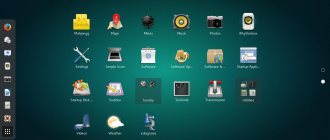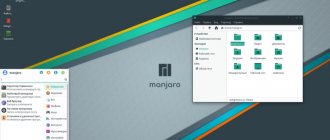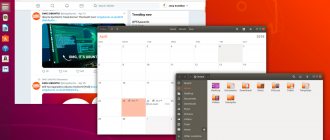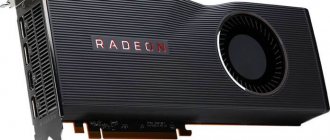What is Linux Mint
Linux Mint is one of the most popular operating systems in the world.
It is developed by the community and is based on the Ubuntu operating system. The main goal of the Linux Mint developers is to make the system as easy to use as possible, and they succeeded. Linux Mint is open source and a free operating system that includes all the necessary programs for everyday use. The system is available for download and subsequent installation in the form of 32-bit and 64-bit images. Let's look at which one you need to download.
- If your computer has 4 GB of RAM or more, you can download a 64-bit image.
- If you have less than 4 GB of RAM, then a 32-bit image will suit you.
- MATE is a fork of Gnome2 and is recommended for installation by all beginners.
- Cinnamon is a friendly Gnome3 based frontend.
- KDE is suitable for users with powerful computers and refined taste.
- XFCE - will find demand on old machines with outdated hardware.
In addition to the division into 32 and 64 bits, there is a division by working environment. At the moment, Linux Mint is available with versions of the Cinnamon, MATE, Xfce and KDE shells:
We share our impressions of the Linux XP Desktop distribution
Dmitry Shurupov
We share our impressions of the Linux XP Desktop distribution
Last fall, the Russian company LINUX-ONLINE released an update to its Linux distribution Linux XP Desktop - 2006 SR2, reminding the community of its original approaches to the Linux business.
Ideological challenge
Linux XP Desktop is the case when, before proceeding to a direct description of the distribution (even though the Linux XP developers do not want to call their product a “distribution”, but prefer to position it as a “ready-made solution”, I consider this generally accepted definition more than appropriate) , I propose to understand how the authors of the project view the world of free and open source software. The ideology espoused by LINUX-ONLINE goes against many widely accepted beliefs in the community about key things like the GNU GPL, Linux and Open Source. Upon its debut, the company received a lot of criticism, but did not abandon its radical views.
In order to understand what caused the community's outrage, it is enough to quickly read the “Linux XP Desktop Manifesto” [1], where the authors easily and naturally criticize the usual aspects of FOSS that they see as inconvenient for marketing. In particular, the manifesto states that for desktops, “the UNIX way is dead, and the Windows way has won,” “the widespread availability of source code is counterproductively multiplying the number of programs and fragmenting the Linux community,” and “a strong commercial component is needed in Linux.”
Many probably believed that because of such a bold ideology, capable of bringing the brain of any more or less fanatical member of the FOSS community to a state of angry boiling, the project would soon sink into oblivion on its own. According to the principle “there is no point in cutting the branch on which you are sitting.” However, practice (so far?) shows the opposite: Linux XP Desktop is alive, developing and being actively implemented (and, what is even more surprising, not only in Russia).
In general, despite the predictable reaction from everyone who is convinced of the need to strictly follow the principles widespread in the community (“free as in free speech”, UNIX-way, etc.), the developers managed to achieve their goal. Having challenged the supporters of Free Ideas ideologically, the company created a competitive solution based on GNU/Linux and proprietary developments. Of course, with its own specifics, its own audience and its own goals, but from this the project only benefits against the backdrop of many monotonous and unpromising amateur distributions that continue to multiply at an unreasonable pace. But how close it will be in this way to the “amazing results” declared in the manifesto, time will tell. We'll look at what we have now.
General information about the distribution
Linux XP Desktop is based on Fedora Core, which, as the box says, guarantees "full compatibility with the world leader - Red Hat Linux." Although compatible with Fedora Core 4 and 5, the included software versions are often FC3 compatible. For example, the default graphical environment uses a version of GNOME that is not quite up-to-date today - 2.8.0.
In this case, the distribution kit is a commercial product and is sold together with a unique serial number. Registering a copy is recommended as the next step after installation, and this requires Internet access (although not necessary for the machine on which the system is installed: the operation can be performed from any computer through the developers’ website).
Linux XP is distributed in several editions: Start Edition (1 installation CD with Linux XP Desktop), Professional (5 CDs, in addition to the installation version there are “Additional Software”, “GamePack”, “Developer Studio”, “HomeMedia”), Ultra (2 DVDs with many additional packages from various public Fedora Core repositories).
The base image of Linux XP can be downloaded [2], and a box with the Professional edition can be purchased, for example, from the Linux Center [3] or from the IDDK store [4].
Download and Install
The first boot from the installation CD greeted me not with the colorful and friendly GRUB splash screen, as one would logically expect... But with the “boot:” prompt, not positioned in the best way on the screen, with a fragment of a white background. And, in fact, that’s all - how to use any additional options and whether they exist at all is not known. However, this is not such a hindrance: simply clicking on initialized the installation process.
The installer who started was greeted in a friendly manner, “on the level.” It is a completely Russified version of Anaconda, which has long served Red Hat distributions and its derivatives faithfully.
Whether Anaconda is used or not, installing the average GNU/Linux system (especially if it is not classified as an “OS for professionals”) has long ceased to be a difficult task even for beginners, and Linux XP once again confirms this.
It is worth noting detailed descriptions of what is happening in Russian (with recommendations on what and how to do), accompanying each installation step, as well as a complete predisposition towards Russian-speaking users in terms of default settings (which is logical)
The system as it is
After the reboot that followed the last stage of installation, the system was greeted with a more adequate GRUB (a slight shift in the visible part of the screen disappeared when any key was pressed to call up the menu, and the background acquired the signature shade of blue). I was surprised that the system was loaded in console mode: following the ideology inherent in Linux XP, this, in my opinion, is illogical: why should the user look at such an abundance of “strange” information? Yes, the bulk of the messages have been translated into Russian, but firstly, not all, and secondly, obviously, the target audience would be more accustomed to watching the process in graphical mode (for example, as is now happening in Ubuntu Linux).
Standard Linux XP Desktop
I started gdm without asking for a login or password, and soon I saw... actually, of course, GNOME, but with its appearance not just reminiscent of Windows XP, but carefully stylized to resemble the interface familiar to users of Microsoft products. This is expressed in the standard theme, and in the “Computer”, “Home Directory” and “Trash” icons on the desktop, and especially in the painfully familiar “Start” button on the panel in the lower left corner. Moreover, the menu called up by this “Start” was also redesigned in order to cause the least confusion for a person who was not prepared for any innovations and who was launching something other than Windows for the first time. All the icons and corresponding elements should not come as a surprise to those who are accustomed to the fact that at the very bottom there is always an option with the shutdown function, a little higher - the last open documents, then executing arbitrary commands from the console, searching through files, and so on.
The principle of simplification and “bringing it to the usual” also affected many other aspects of the system - in fact, this is the “highlight” of the distribution. For example, system applets in the tray, such as network connections and sound settings, were also awarded “summarizing”, in which, when calling the configuration, utilities are called that look completely reminiscent of their analogues in Windows, but at the same time remaining quite “Linux”. It turned out to be an interesting hybrid, but most importantly, it functions well.
Work in the system is carried out with the rights of the superuser root, for which you do not even need to enter a password when booting the system. This will undoubtedly come as a shock to security-conscious Linux users. However, this is a direct and logical consequence of the developers’ stated approach to creating their Linux product: a desktop user needs a system that “just works.” It turns out that the developed multi-user mode provided at the OS kernel level is also not needed...
Although GNU/Linux systems have recently been quite successful in supporting various hardware, I would like to separately note that I have not had any problems with the hardware. In particular, the installed system reproduced sound and made it possible to watch videos and play three-dimensional games without delay. It is worth adding to this that the most commonly used codecs (audio and video) were installed in the same way “out of the box”.
Control Panel
I quickly had a reason to get acquainted with the control panel: the first visible drawback was the ugly Russian fonts by default, and the user manual included with the box stated that this problem could be solved by updating the system.
In the tray and in the “Start” menu you can easily find the “Linux XP Control Panel”. What I saw after launching it again reminded me of a similar panel in a well-known operating system, but I can’t say that it surprised or upset me. On the contrary, the sight presented itself was expected and, at first glance, impressive - “everything is as it is.”
Linux XP Control Panel
Everything is divided into 6 main categories: appearance, hardware, network, language and standards, users, applications. Each of them contains all the necessary utilities: both third-party ones like gnome-pilot for “exchange with Palm PDAs” in the “Equipment” section and system-config-network for “network settings” in the “Network” section, and their own ones like “activation " and "adding and updating programs" in the "Applications" section. Despite the seeming confusion in terms of completely heterogeneous applications (native from the GNOME project, configurators from Red Hat, our own developments in Java), it must be admitted that while working with all this, perhaps, you are not overwhelmed by an all-consuming sense of the integrity of the administration system, then in In any case, there is no hostility or feeling of inconvenience. Of course, there is something to be refined and improved, but everything is not as bad as one might expect.
Updating the system is simple and fast. The already mentioned software installation/update wizard first asks you to select what will be installed: additional software or system component updates. Accordingly, after selecting the second option and clicking “Next” twice, waiting for the download and installation of the necessary software, the problem with the fonts was resolved. True, I was a little upset by the requirement to restart the computer in order for the update to take effect (after all, restarting the X server should be enough?). This moment reminded us that, no matter how hard one tries, in addition to the best features of any project, it is possible to adopt its less-than-strong sides. Just don't get too carried away...
The packages for such a system update are taken from the native Linux XP server, and I did not see the opportunity to specify alternative repositories. Although the yum configuration (/etc/yum.repos.d/lxp.repo) contains paths to mirrors with updates to Fedora Core (version 3, by the way).
Software
Probably, following their manifesto (“... the end user does not need several dozen “almost working” programs, he needs one, but working 100% ..."), the developers tried to leave in Linux XP Desktop only the most necessary for a desktop PC user and the most mature on their view of the program. However, I will leave aside the question of how fundamentally this solution distinguishes them from the authors of many other desktop-oriented Linux distributions.
Linux XP Desktop 2006 SR2 is based on the Linux kernel 2.6.15 (in this respect it corresponds to Fedora Core 5). With the aforementioned GNOME 2.8 environment, the minimum distribution package includes: the traditional system browser Nautilus (2.8.1), the 2-panel file manager GNOME Commander and a set of standard utilities such as the File-roller archive manager, the Gcalctool calculator and the Gpdf PDF viewer.
Applications for working with sound in Linux XP
Presented are such multimedia applications as video players Totem (standard for GNOME, based on Xine) and MPayer (along with GUI; interestingly, the principle of “one working program” for some reason was not extended to directly competing video players), TV player tvtimer, Rhythmbox audio player, GQradio radio player, gnome-sound-recorder audio recording program, gnome-cd audio CD player. For working with graphics, there is the gThumb viewer, a utility for working with cameras gtkam, and the traditional GIMP editor.
Internet software included with Linux XP
The only office software in the single-disk version of Linux XP is the Dia diagram editor. This also includes the StarDict dictionaries and the standard gnome-dictionary. Internet applications are standard: Mozilla Firefox web browser, Evolution email client, Gaim messaging client, GnomeMeeting video conferencing software, X-Chat IRC client, Terminal Server Client (GUI add-on for rdesktop and vncviewer) and p2p client aMule.
Installing OpenOffice.org from CD
I did not dare to download the open office suite OpenOffice.org and installed it from the second CD (“Additional Software”) without any problems. There is a Russified second version of OOo assembled by Infra-Resource. Installing programs from native additional disks is simple: after the CD is inserted into the drive, you need to find the directory with the required package on it and (usually) run the setup.jar file. Then a menu for selecting the desired localization appears, and subsequent installation consists of double-clicking on the “Next” button and the optional ability to add “shortcuts”.
OpenOffice.org at work
Among other additional software packages on disk, I’ll highlight drivers for video cards from NVIDIA and ATI, Crossover (commercial software for running office Windows applications in a Linux environment), and for developers – the popular IDE Eclipse, JBoss and Apache Tomcat.
Among the games on the GamePack disc: 3D shooter "Cube" and a demo version of "Unreal Tournament 2004", a clone of "Colonization" FreeCol, a three-dimensional real-time strategy "glest", a turn-based strategy "Battle for Wesnoth", a car simulator "TORCS" , a loose remake of the classic Scorched Earth – Scorched 3D. In general, it’s a pretty good set, where everyone can find something suitable if they get bored while working in the system.
Little things
The developers of Linux XP clearly do not share the position of their many colleagues from the Open Source world (as well as many other “worlds”...) and, in particular, consider it normal that the user constantly works with root rights. Moreover, regardless of what powers he really needs to perform certain tasks. And while working with the system, I had the opportunity to repeatedly observe the nuances caused by this contradiction. For example, the first attempt to load from the X-Chat IRC client menu results in a message stating that launching this application as a superuser is, I quote, “stupid.”
A similar point arose during the installation of Linux XP. At one of the last stages, the installer asks you to enter the root password, and at this very time the help on the left intelligently informs you that it is not good to work in the system with superuser rights. It is recommended to create an additional account, which you make the main one, and from under it execute the necessary commands via sudo. However, if usually installers, after such statements, offer the next step to create a new (regular) user, there were no such proposals here.
There are clear examples of things that have caused strong community reactions. If experienced users are unlikely to agree to work in such a system for a long time, then new ones may not understand the true origin of the “pitfalls” (the most obvious are serious security problems) initiated by the “pragmatic approach” of the manufacturer. The more global negative consequences are such that some, after such a “test drive” with Linux XP, will probably not want to turn to Linux systems in the future. And this is sad and is at odds even with the long-term goals of the project’s authors themselves.
In addition, I note that the development team could do with an additional check of the interface localization: I noticed obvious typos in several places.
conclusions
To be honest, when I started reviewing Linux XP, I expected to see a less mature product, which, coupled with loud statements from the manufacturers, cast doubt on the seriousness of the entire project. However, acquaintance with the system showed that “not everything is so bad in the Danish kingdom.” Even though there is relatively little talk about Linux XP in the circles of our Open Source community, the system definitely has the right to life and prospects for further development. And there is certainly room for improvement. Because although the functioning of the system “in general terms” (that is, at the level of the user approach to which the authors oriented it) was pleasing, there are definitely enough shortcomings in the development of various components. And if we add here the serious shortcomings caused by this very approach, and, “to the heap,” the eternal “there is no limit to perfection,” then there is still a lot of work.
Linux XP Desktop is a system created on the basis of controversial principles and the lack of continuity of the UNIX-way, striving, having absorbed many years of experience in development in the field of OS from Microsoft (as an antipode to this very UNIX-way), to present itself as the simplest and most convenient solution for users desktop PCs that do not want to know about the internal structure and customize everything for themselves at the source code level. It is unlikely to appeal to any lovers of “old school” GNU/Linux systems, but therefore it is not intended for them. However, it is also impossible to say with complete certainty how well it will be received by novice Linux users.
- Linux XP Desktop manifesto – https://www.linux-online.ru/about/articles/detail.php?ID=897.
- Linux XP download page – https://www.linux-online.ru/desktop/download.php.
- Linux XP Pro in Linux Center - https://www.linuxcenter.ru/goods/1313.html.
- Linux XP Pro in the IDDK store – https://shop.iddk.ru/cdrom/62055.html.
Download Linux Mint | Linux Mint
The system is available for download as an ISO image, but we recommend using a link to a torrent file, as in this case the download speed will be much faster.
Download Linux Mint 17 Qiana
Linux Mint 17 was supported until April 2020
- Cinnamon (32-bit): iso torrent
- Cinnamon (64-bit): iso torrent
- KDE (32-bit): iso torrent
- KDE (64-bit): iso torrent
- MATE (32-bit): iso torrent
- MATE (64-bit): iso torrent
- Xfce (32-bit): iso torrent
- Xfce (64-bit): iso torrent
Download Linux Mint 17.1 Rebecca
Linux Mint 17.1 was supported until April 2020
- Cinnamon (32-bit): iso torrent
- Cinnamon (64-bit): iso torrent
- KDE (32-bit): iso torrent
- KDE (64-bit): iso torrent
- MATE (32-bit): iso torrent
- MATE (64-bit): iso torrent
- Xfce (32-bit): iso torrent
- Xfce (64-bit): iso torrent
Download Linux Mint 17.2 Rafaela
Linux Mint 17.2 was supported until April 2020
- Cinnamon (32-bit): iso torrent
- Cinnamon (64-bit): iso torrent
- KDE (32-bit): iso torrent
- KDE (64-bit): iso torrent
- MATE (32-bit): iso torrent
- MATE (64-bit): iso torrent
- Xfce (32-bit): iso torrent
- Xfce (64-bit): iso torrent
Download Linux Mint 17.3 Rosa
Linux Mint 17.3 was supported until April 2020
- Cinnamon (32-bit): iso torrent
- Cinnamon (64-bit): iso torrent
- MATE (32-bit): iso torrent
- MATE (64-bit): iso torrent
- KDE (32-bit): iso torrent
- KDE (64-bit): iso torrent
- Xfce (32-bit): iso torrent
- Xfce (64-bit): iso torrent
Download Linux Mint 18 Sarah
Linux Mint 18 will be supported until April 2021
- Cinnamon (32-bit): iso torrent
- Cinnamon (64-bit): iso torrent
- MATE (32-bit): iso torrent
- MATE (64-bit): iso torrent
- Xfce (32-bit): iso torrent
- Xfce (64-bit): iso torrent
- KDE (32-bit): iso torrent
- KDE (64-bit): iso torrent
Download Linux Mint 18.1 Serena
Linux Mint 18.1 will be supported until April 2021
- Cinnamon (32-bit): iso torrent
- Cinnamon (64-bit): iso torrent
- MATE (32-bit): iso torrent
- MATE (64-bit): iso torrent
- Xfce (32-bit): iso torrent
- Xfce (64-bit): iso torrent
- KDE (32-bit): iso torrent
- KDE (64-bit): iso torrent
Download Linux Mint 18.2 Sonya
Linux Mint 18.2 will be supported until April 2021
- Cinnamon (32-bit): iso torrent
- Cinnamon (64-bit): iso torrent
- MATE (32-bit): iso torrent
- MATE (64-bit): iso torrent
- Xfce (32-bit): iso torrent
- Xfce (64-bit): iso torrent
- KDE (32-bit): iso torrent
- KDE (64-bit): iso torrent
Download Linux Mint 18.3 Sylvia
Linux Mint 18.3 will be supported until April 2021
- Cinnamon (32-bit): iso torrent
- Cinnamon (64-bit): iso torrent
- MATE (32-bit): iso torrent
- MATE (64-bit): iso torrent
- Xfce (32-bit): iso torrent
- Xfce (64-bit): iso torrent
- KDE (32-bit): iso torrent
- KDE (64-bit): iso torrent
Download Linux Mint 19 Tara
Linux Mint 19 will be supported until April 2023
- Cinnamon (32-bit): iso torrent
- Cinnamon (64-bit): iso torrent
- MATE (32-bit): iso torrent
- MATE (64-bit): iso torrent
- Xfce (32-bit): iso torrent
- Xfce (64-bit): iso torrent
Download Linux Mint 19.1 Tessa
Linux Mint 19.1 will be supported until April 2023
- Cinnamon (32-bit): iso torrent
- Cinnamon (64-bit): iso torrent
- MATE (32-bit): iso torrent
- MATE (64-bit): iso torrent
- Xfce (32-bit): iso torrent
- Xfce (64-bit): iso torrent
conclusions
Okay, now you know everything you need to know. Linux distributions for windows users can help make your transition from Windows easier, especially if you're new to the world of Linux. Tell us what your “transition distribution” was like, and also share useful tips with newcomers. Write in the comments below!
Source: itsfoss.com
Related posts:
No similar posts











